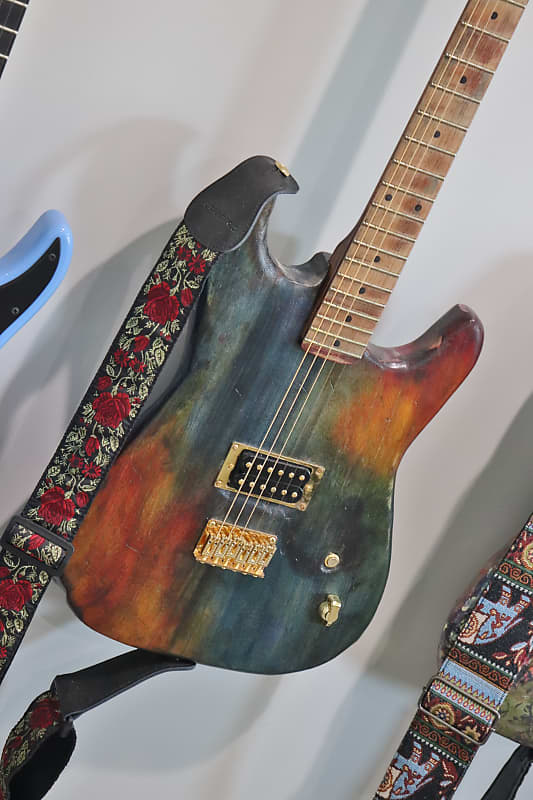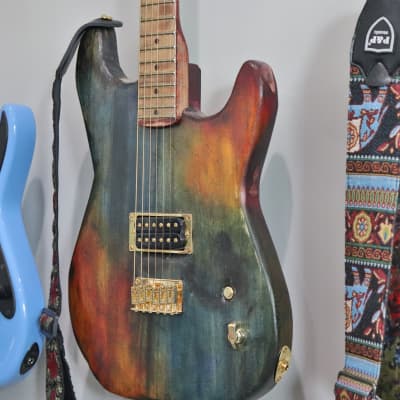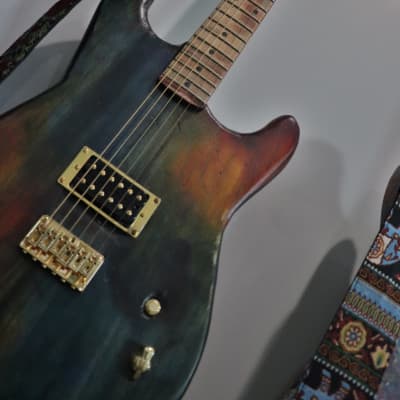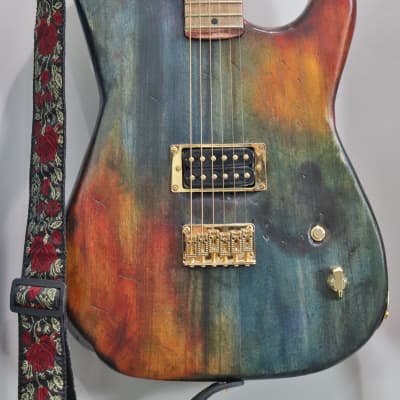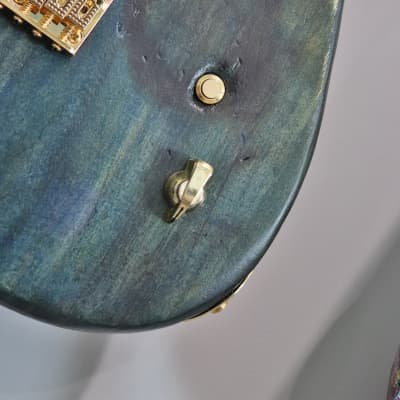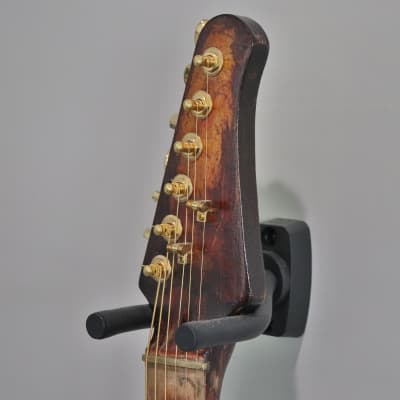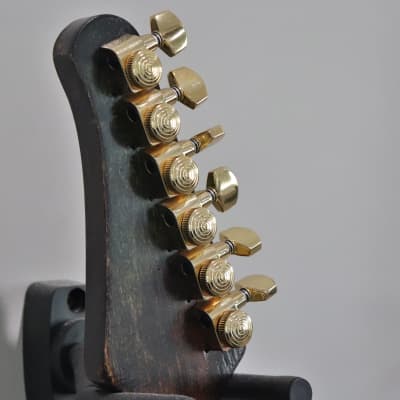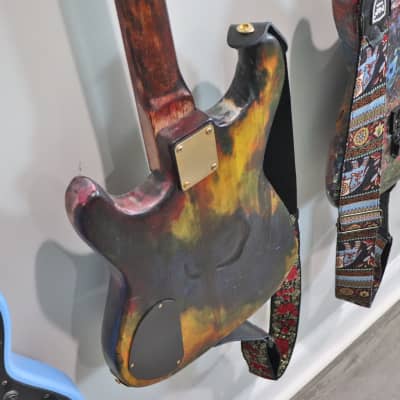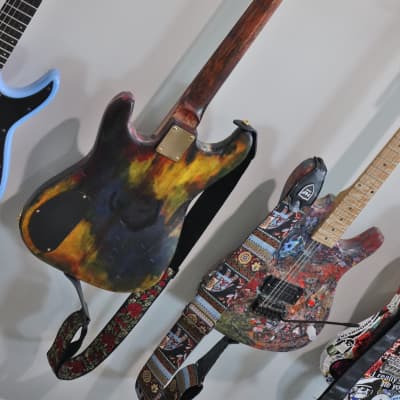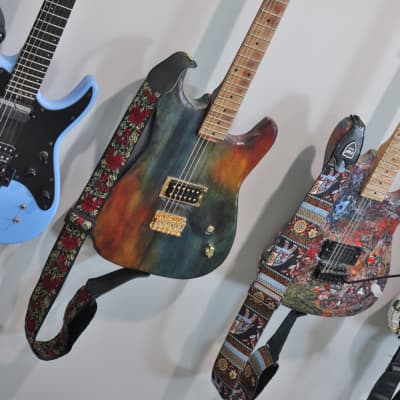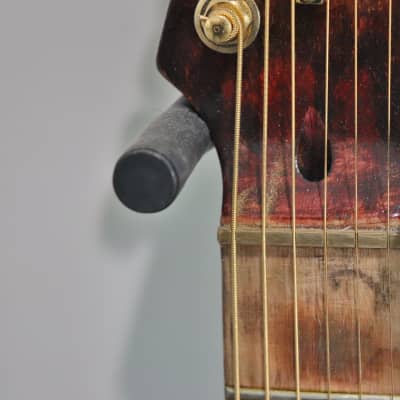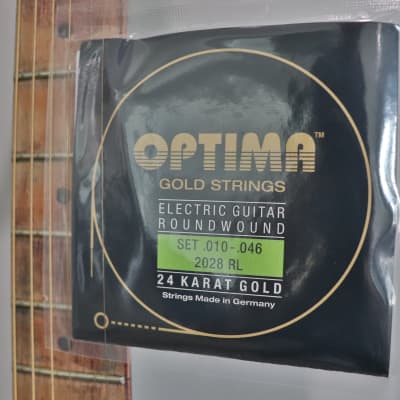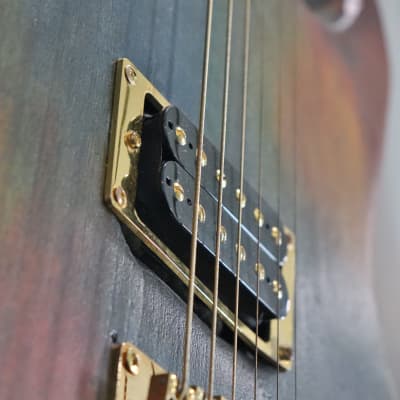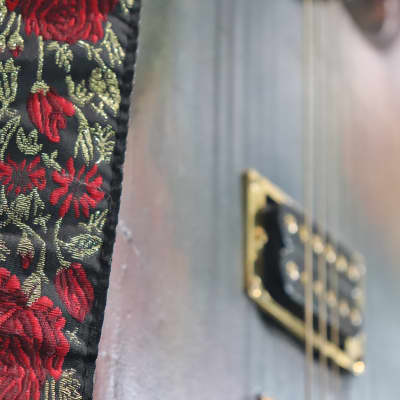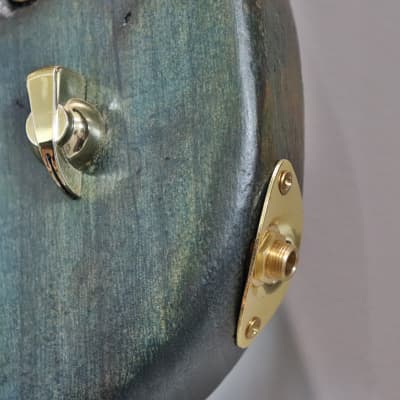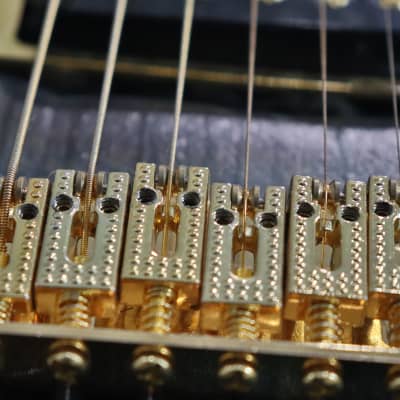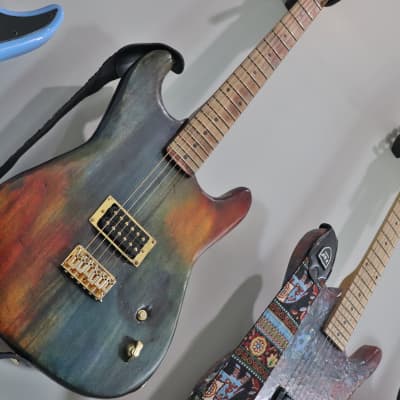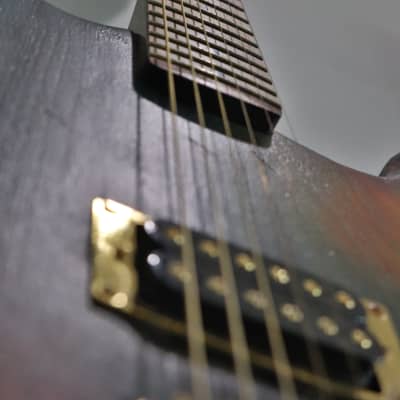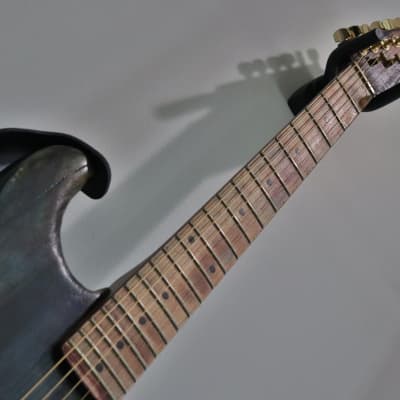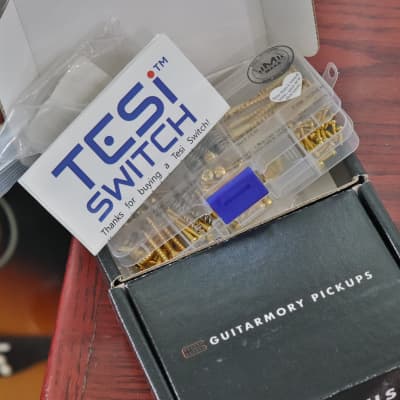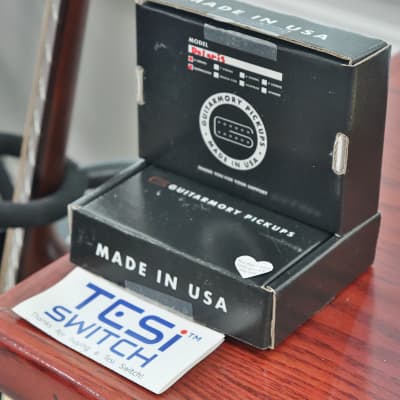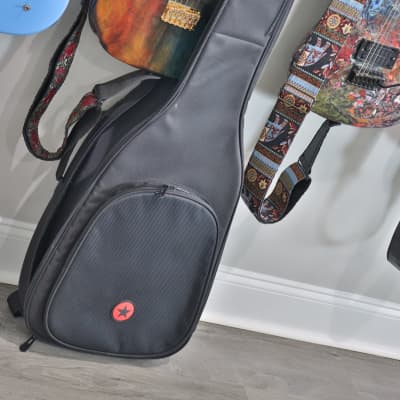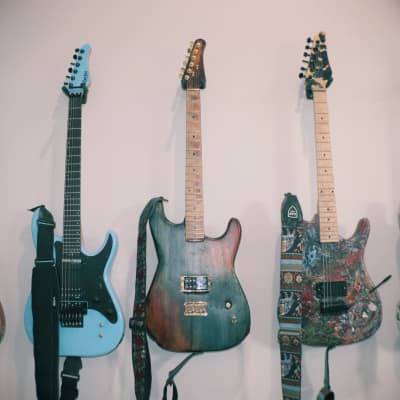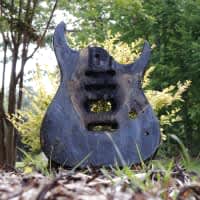This handmade beauty is the perfect addition to any arsenal. Comes fully equipped with a matching rose guitar strap, gig-bag, picks, and cable. Everything you need to plug and play!
This Tie-Die stained Basswood body has a matching colored maple neck, rolling bridge and string saddles, and comes fully equipped with one volume knob and one gold Tesi Kill switch. It's hand-wired high-output Guitarmory pickup is wired directly to a PureTone clear output, and the 24k gold strings are nested smoothly into a Fender Parts brass nut. Plug in, crank it up, and rock and roll!
I call her the Mojo Maker, but you can call her yours.
General Specifications:
Basswood body
Maple Neck and Fretboard
Brass Nut from Fender Parts
Locking Tuners
Rolling String Trees
Top load Bridge
Gold-Plated Potentiometers
Pure Tone Full-Contact Output Jack
Full Cavity Shielding
Tesi Hardwired Killswitch
Rolling String Saddles
Hand-Wired Humbucker from Guitarmory Pickups
24k Gold Guitar Strings by Optima
Almost all of the following is plagiarized, but it is pertinent information nonetheless.
Basswood Body:
Basswood is one of the most frequently talked about tonewoods out there. Though basswood may sometimes be less expensive to purchase out in the wild, this does not mean that the tone of the instrument will be worse. In fact, in many cases it’s exactly what a player is looking for. Basswood has been used in many high-end guitars for decades and is considered a great tone wood for instruments throughout the industry.
American basswood is derived from the northernmost to the southernmost portions of the eastern United States and as far west as North Dakota. Since the 1980’s, basswood gained popularity and for a time was probably the most used wood for locking tremolo guitars and paired with maple necks because of how well they cut through the mix. Basswood is also one of the most suitable wood species for hand carving in our factory. Toward the end of the late 80’s, a few other types of tonewoods were mistakingly thought to be basswood which lead to a decline in basswood’s popularity. However, true basswood does produce a very pleasing midrange tone, which is why modern guitar companies use the wood for instruments to this day.
A lot of controversy surrounding basswood stems from the fact that it varies in quality. Certain pieces of basswood sound great, and other pieces can sound really bad. If you compare the weight of less expensive guitars to more high-end models made of basswood, you will find that most high-end guitars weigh less and normally sound better. Companies who mass produce guitars tend to use basswood, so this evidently alters the perception of basswood in the industry.
Basswood is very light weight and produces a fairly even and full to mid-range response throughout the entire band width. Many guitar enthusiasts agree that it’s well matched with humbucking pickups because basswood produces a lot of the same frequencies that pickups easily recreate. Basswood’s pale white to light brown color is mostly uniform throughout the face grain of the wood, and knots and other abnormalities are very uncommon. We choose lightweight cuts of basswood because they tend to sound much better than the heavier ones. This is something that holds true for most tonewoods, but especially basswood.
Basswood is a very full-bodied sounding tonewood.
Maple Neck:
Maple is an extremely popular wood for necks and fretboards. Recognizable because of its bright tone, grain patterns and moderate weight. Its tonal characteristics include good sustain with plenty of bite. It is about as dense as hard ash, but is much easier to finish. Very durable. When used on a fretboard, Maple produces tremendous amounts of higher overtones and its tight, almost filtered away bass favors harmonics and variations in pick attack.
Brass Nut:
Durable and bright sounding overall, metal nuts have great tone transfer properties and are used as the core material for locking and roller Nuts on high-performance guitars. Brass is still a popular choice amongst some builders as it’s denser than bone, plastic, or other materials and offers a lovely sustain decay.
Kill Switch:
Tom Morello and Buckethead are just a few that have taken the mantle and used the killswitch to devastating effect. If the effect is cool enough for these guys, then it’s cool enough for anybody. It’s important to note that the killswitch effect is just that. An effect.
Whole songs can be built around the use of a killswitch (Know Your Enemy by RATM) but you probably wouldn’t play a whole set with a killswitch. So pull the technique into your arsenal and use it to create textures in your music. Even if that texture is a machine-gun scattering.
Pure Tone Jack:
The patented Pure Tone jack contains dual tension grounds and dual positive tips for optimal signal and lowest possible noise. 100% greater surface area at all contact points creates a more stable connection; as a result, high and low frequencies are greatly improved creating a much more balanced sound while eliminating frequency spikes. No more noise crackle caused by pressure grounds!
Shielded Cavity:
A shielded cavity is when we coat all surfaces inside the guitar with a shielding paint or shielding foil. There are several products available online or at the local hardware store that will work correctly. We will also need to use the paint or foil to coat the cavity cover or pickguard. We essentially create a metal box to hold all of the guitar’s electronics.
Our metal box shields our electronics from every angle, protecting them from electromagnetic and RF interference. This interference can enter your signal and create a static or buzz in your sound. Many items around the home can cause interference, including your refrigerator, microwave, washer, dryer, and fluorescent lighting. Power transformers and street lights can also cause interference.
A shielded guitar cavity will go a long way towards preventing the interference from reaching your signal. Shielded wire leaves your volume and tone pots exposed, so shielding the cavity does a better job of protecting your guitar.
